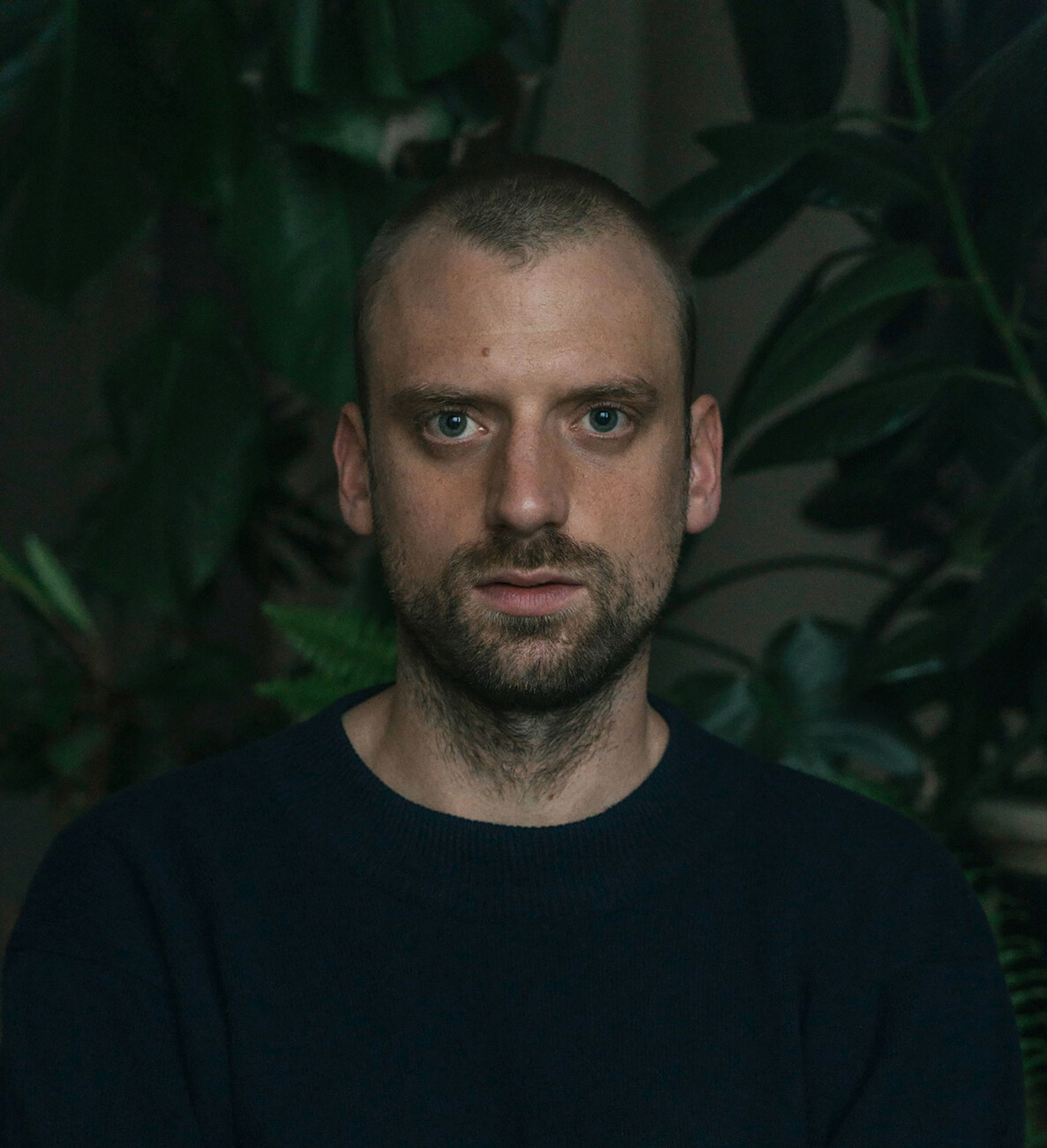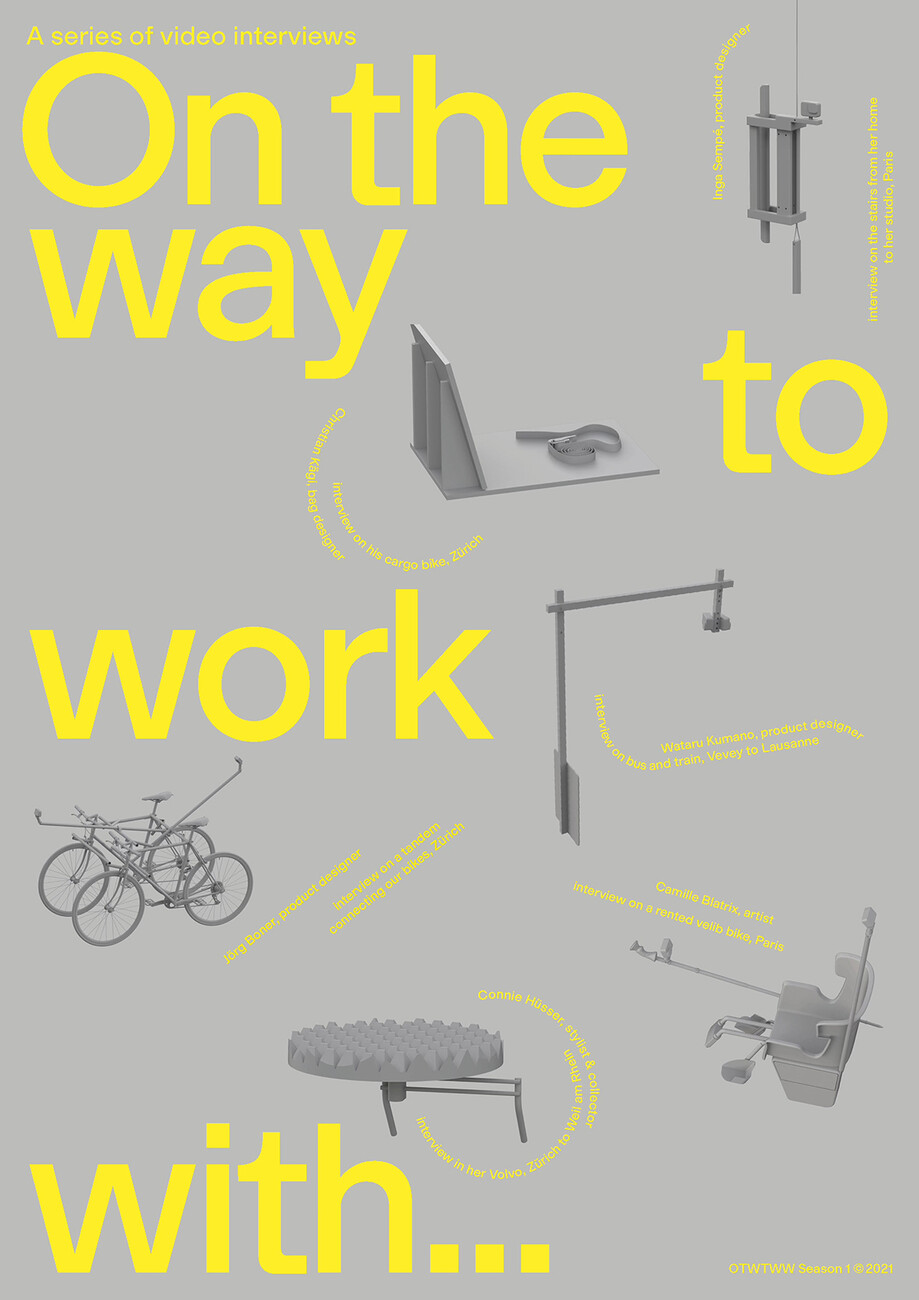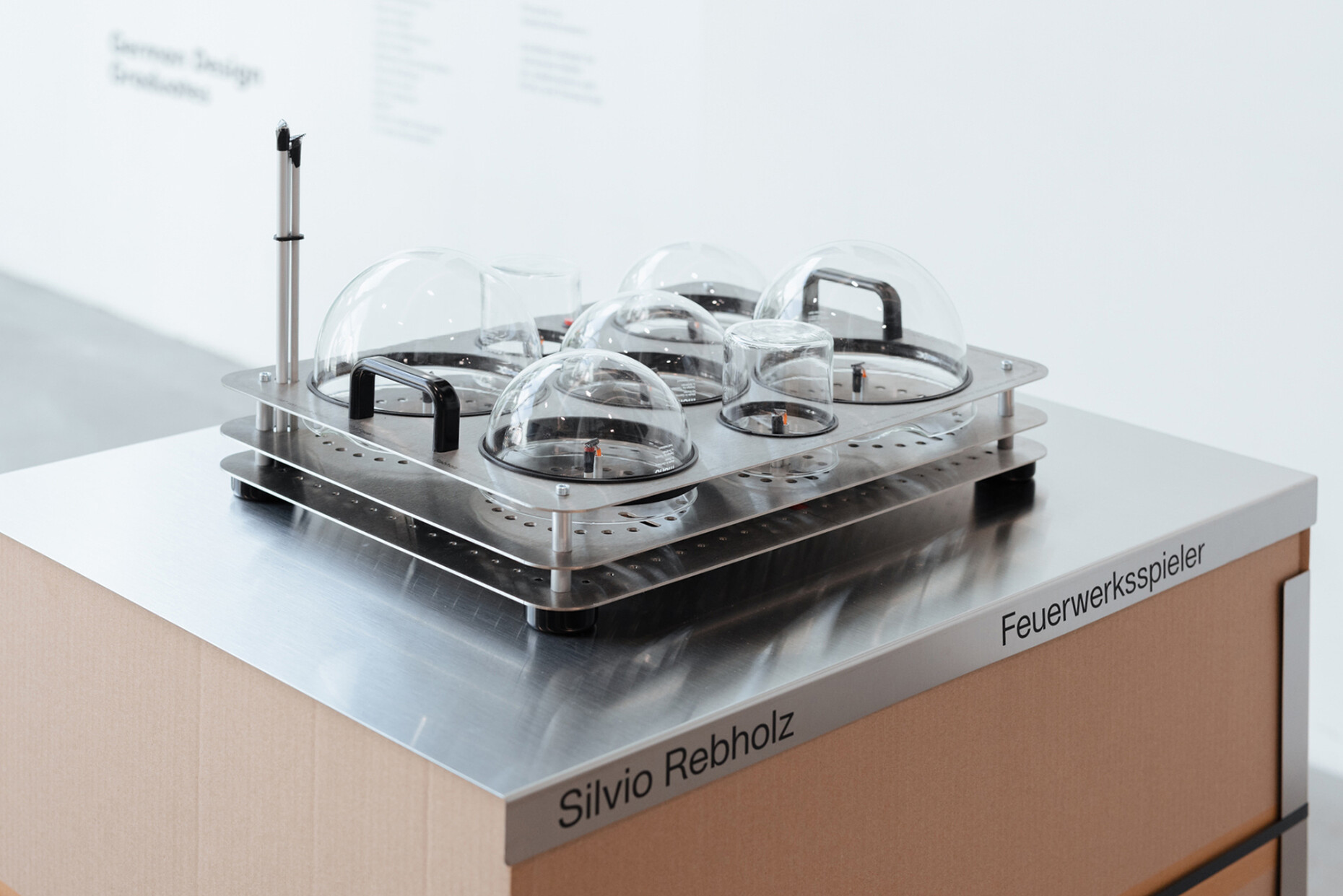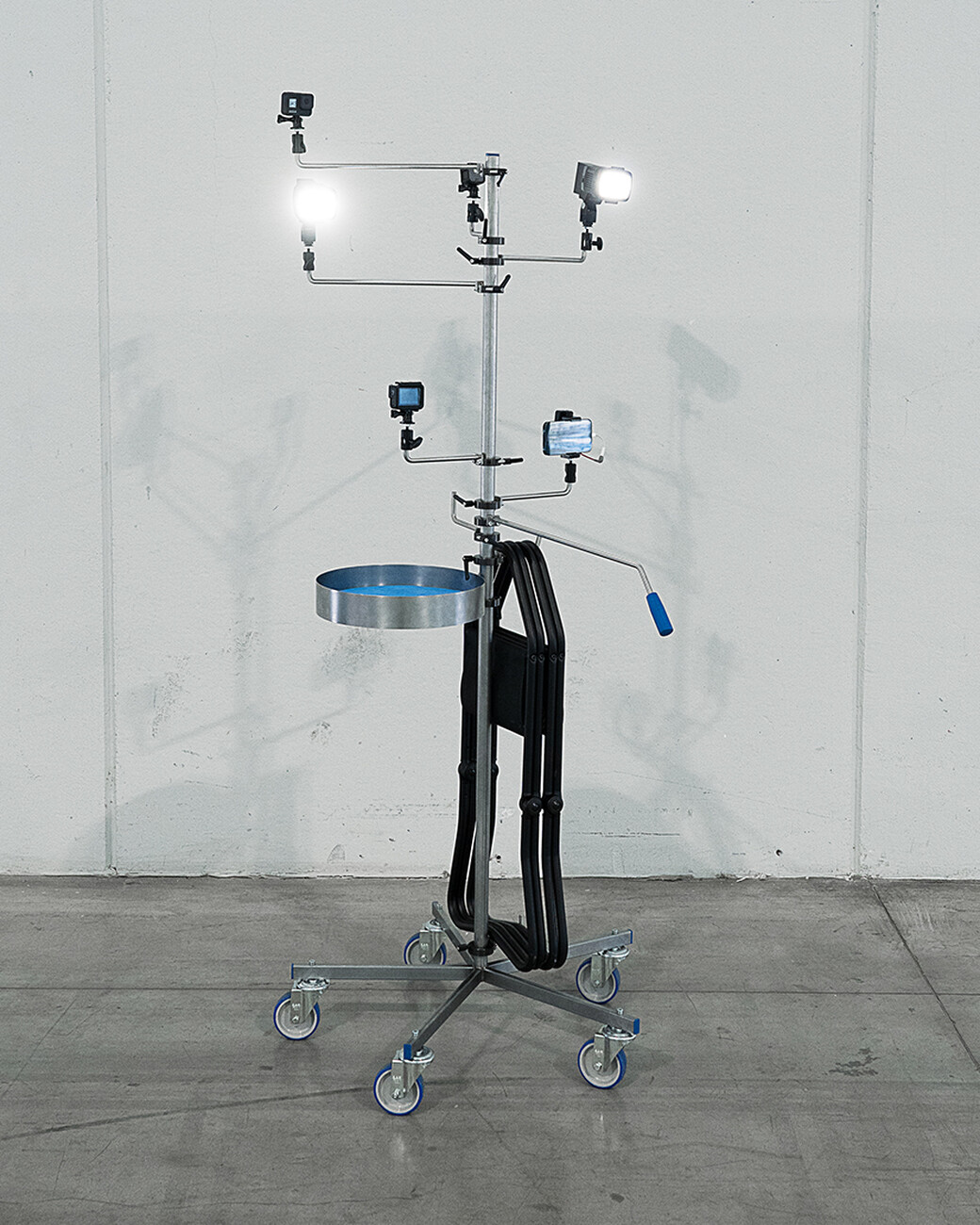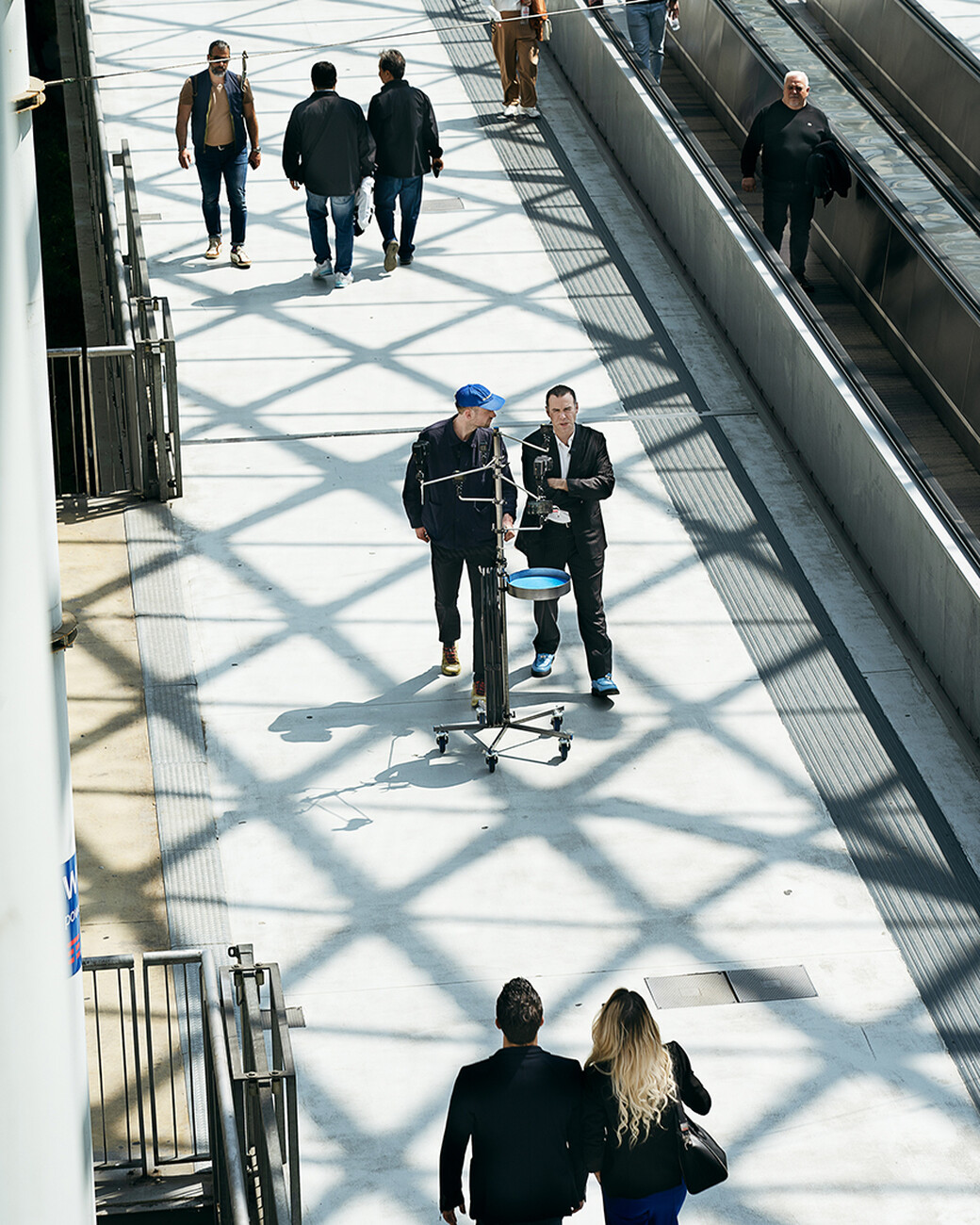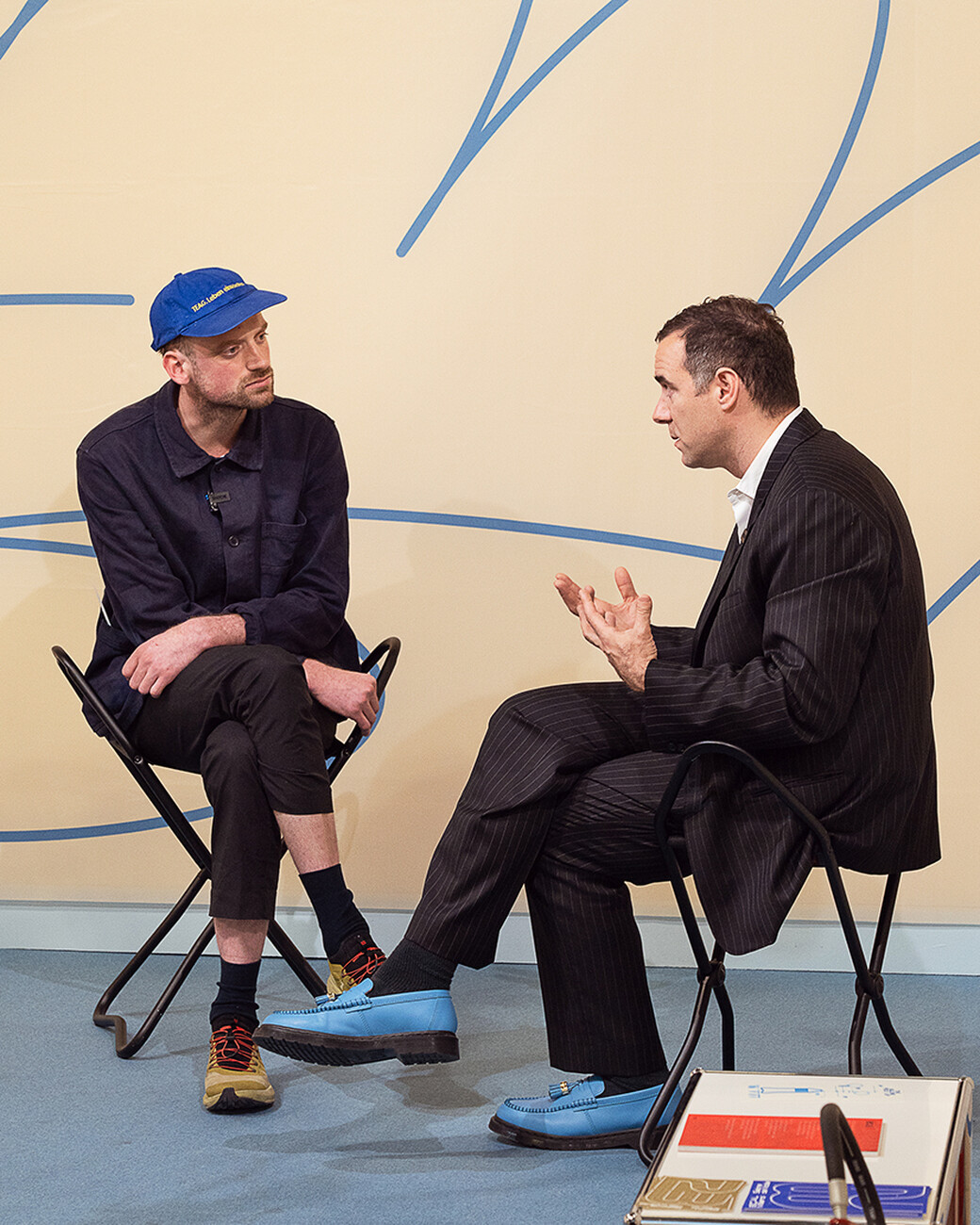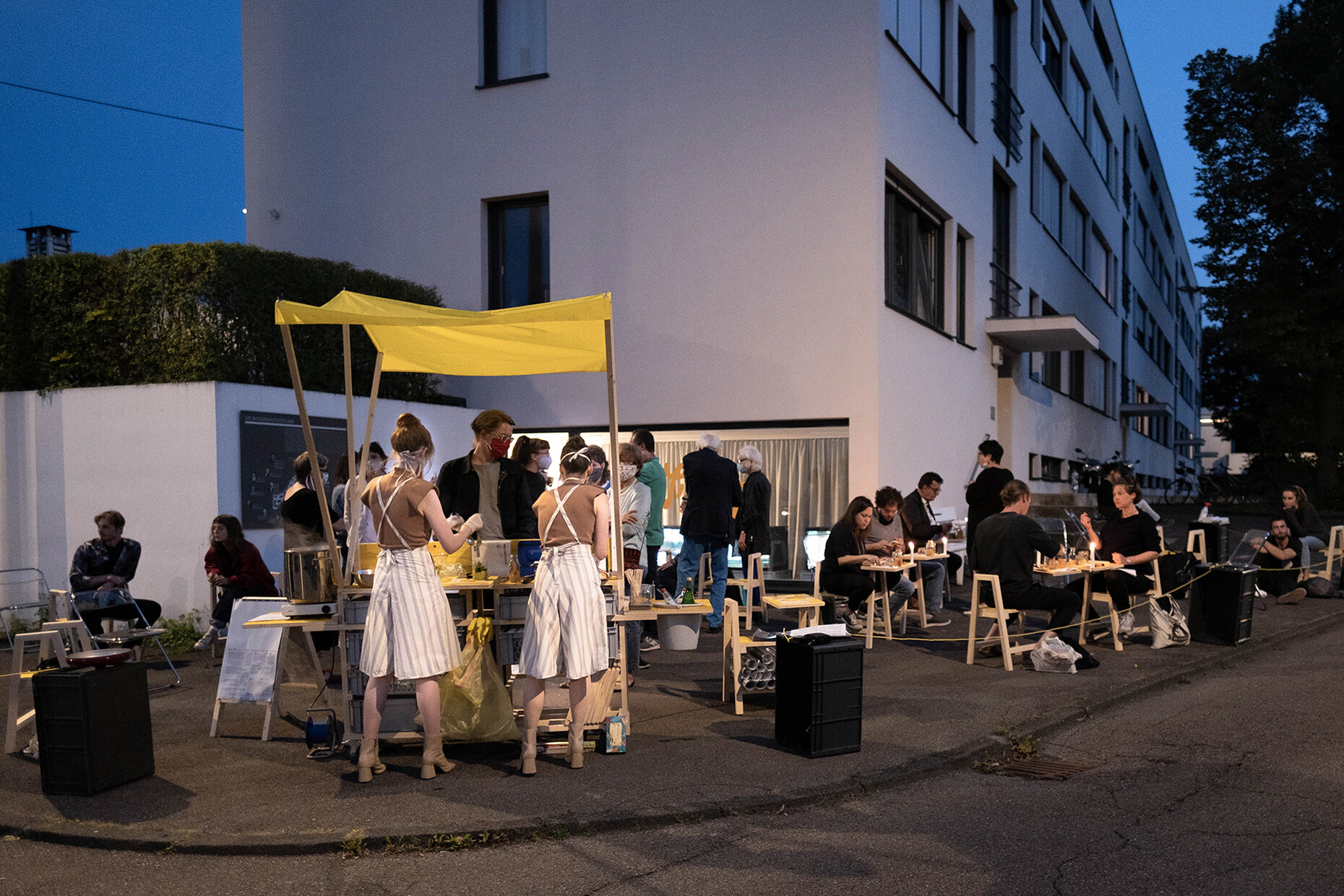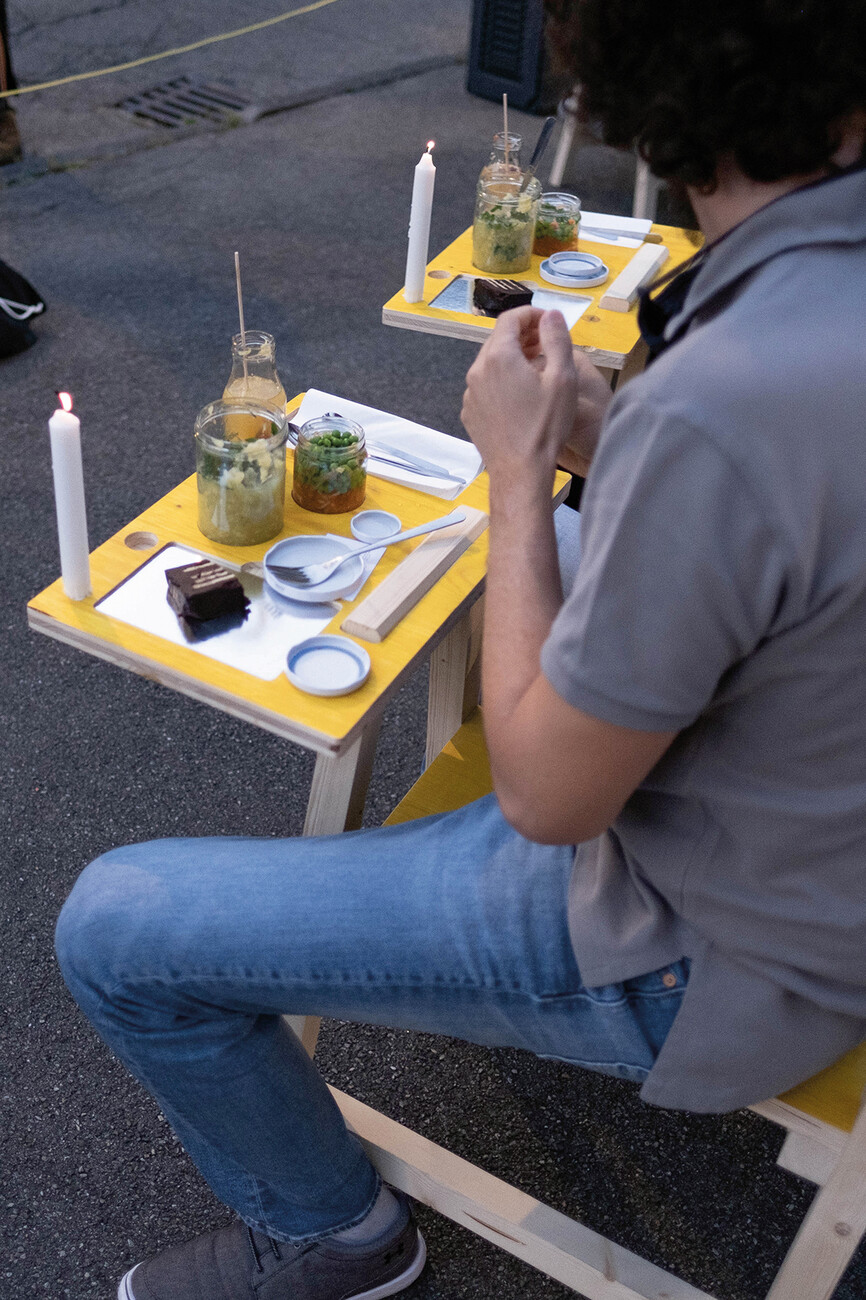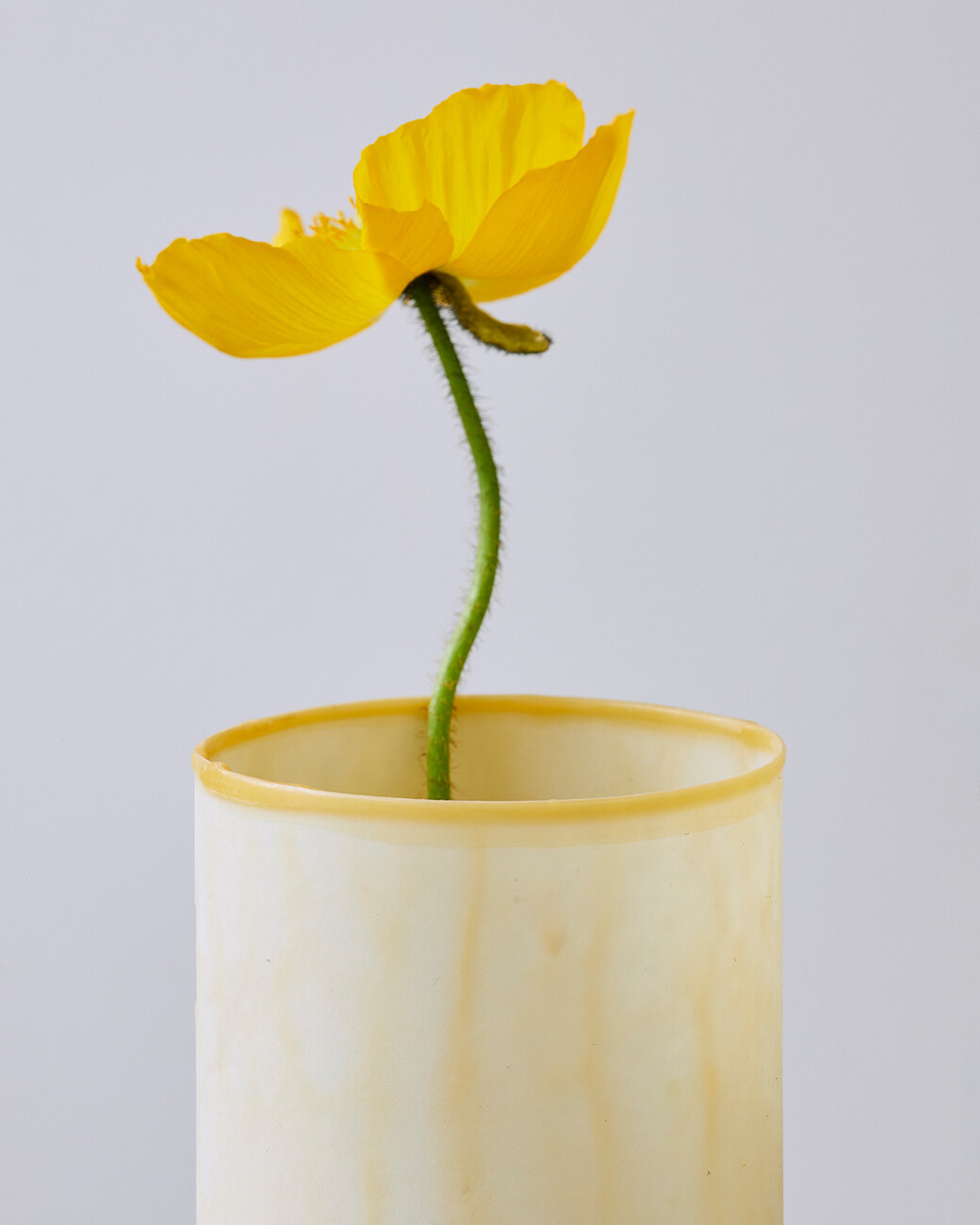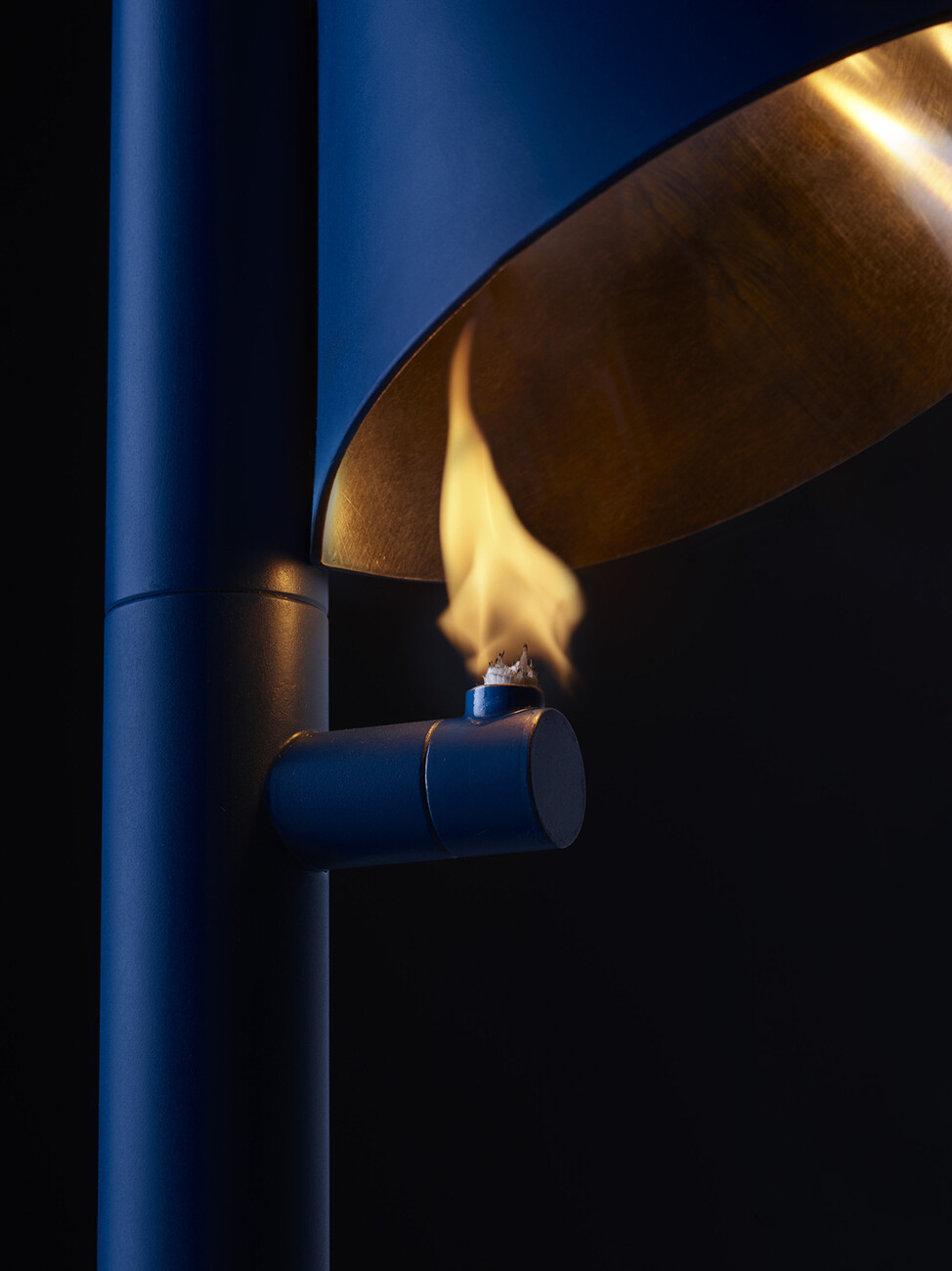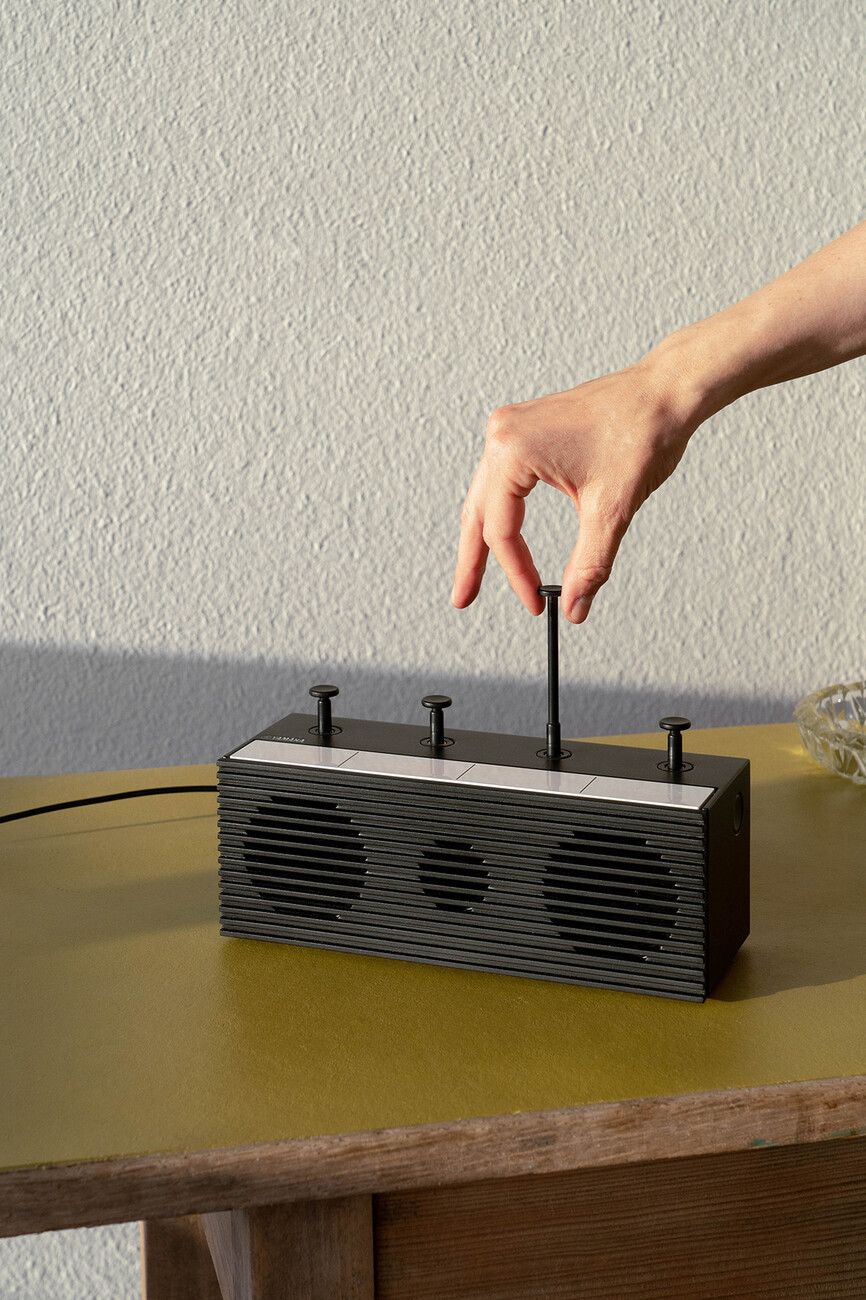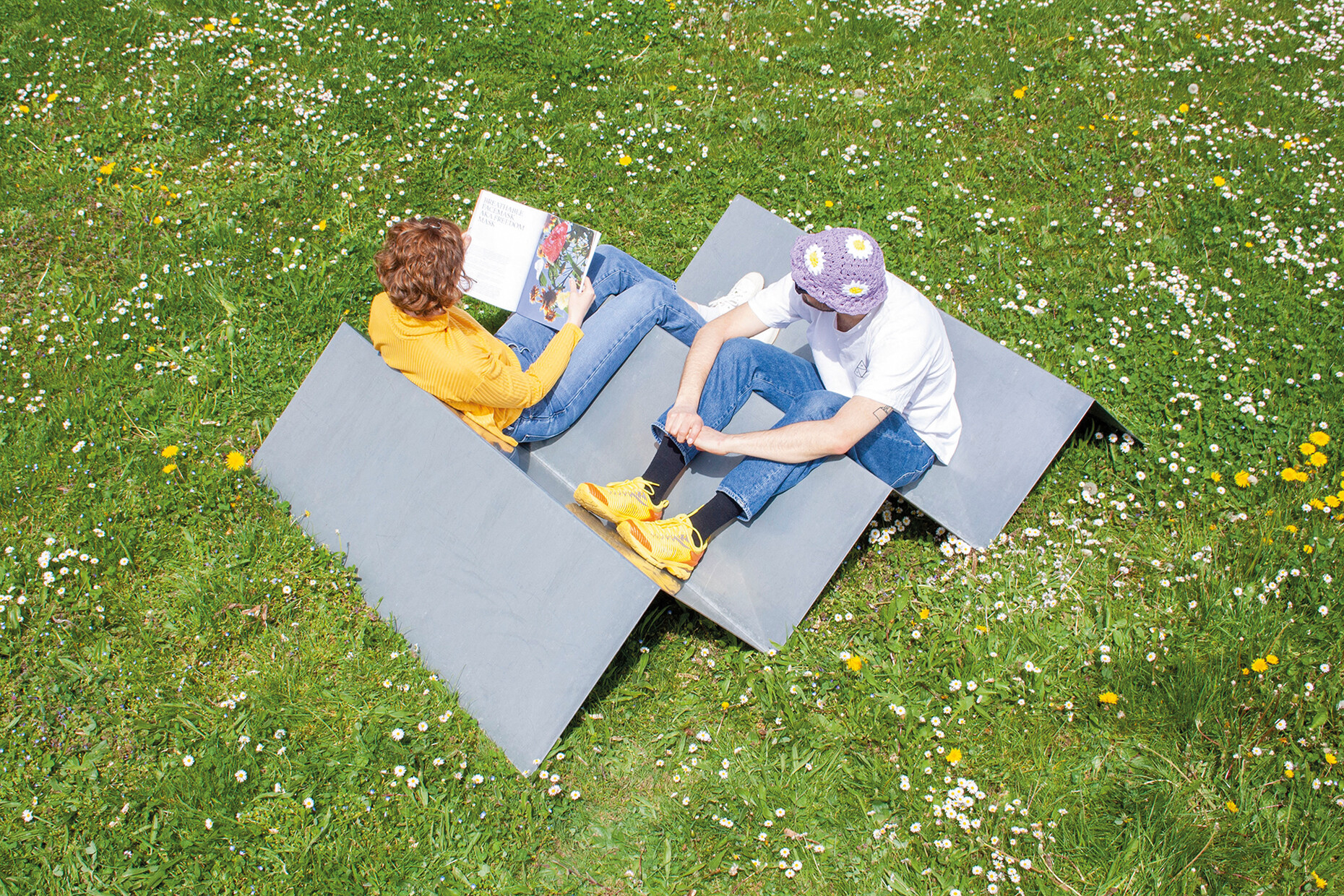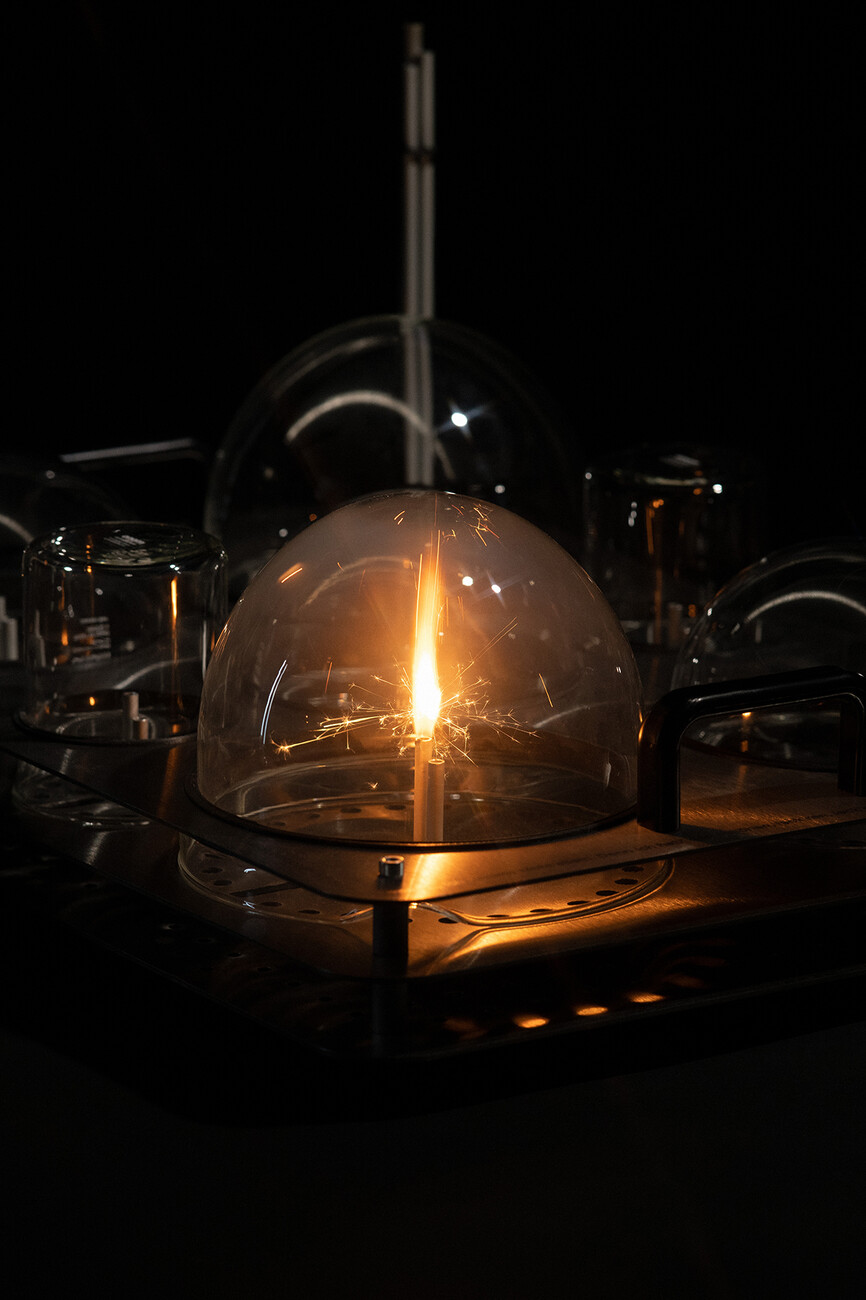YOUNG TALENTS
"There is no culture of criticism in design"
With Christian Kaegi from Qwstion on a cargo bike or with stylist Connie Hüsser in a Volvo: Silvio Rebholz interviewed protagonists of the Swiss design scene on their way to work for his master's degree at Ecal University – and created unconventional extensions to the vehicles. Rebholz's portfolio also includes more conventional design objects such as seating, vases and an oil lamp. To mark the 40th anniversary of the Mono teapot, the Lausanne-based designer recently created "Feuerwerksspieler", a kind of table firework made from the glass hemispheres of the teapot. In addition to his work as a designer, Rebholz is also active in teaching. We spoke to him via video call about issues of trust, the lack of a culture of criticism in design and his future in the niche market.
Jasmin Jouhar: You enjoy holding interviews. What interests you as a designer about the staged interview format?
Silvio Rebholz: Before I started doing interviews myself, I was fascinated by TV shows because they usually feature real people talking in fictional settings. This creates conversations that only happen because they are filmed. I then wrote my theoretical thesis for my Master's degree at ECAL on the design of TV studio sets and analysed how the designs influence the conversations. As part of my research, I conducted interviews with designers who create TV studios. This opened up a whole new world of product design for me. I can design for situations that don't exist in reality and I can design them so that they are not so exclusive.
What do you mean by non-exclusive?
Silvio Rebholz: Designers usually have two options. You can either design a mass-produced product and, at best, do a lot of good for a lot of people. Or you can be very specific and exclusive and make a one-off piece for a gallery, for example. My research opened up a third option with objects for interviews, because they are as specific as for a gallery, but are distributed via the camera and fulfill their function when they are seen by a wide audience. I can make a customized object that has a raison d'être for many people.
What was important to you when designing the settings and objects for the interviews?
Silvio Rebholz: For my first series "On the way to work with...", I wanted to create intimacy. That's why there wasn't a large camera crew. It was mostly just me and one other person filming from an outside perspective. I made my way to work with each interviewee. The crucial thing is that we have to do something together and trust each other. Do I place a ceramic object from Connie Hüsser's collection on a turntable at 130 kilometers per hour on the highway? That is a question of trust. Just like when I sit on Christian Kaegi's cargo bike and don't know where we're going. The objects help me to get into a deeper conversation with people. Of course, the people I talk to are often excited, because it's an unusual situation. Jörg Boner, for example, said that he feels like he's on stage when he's being filmed. But he forgot that when he spoke to me. We cycled together, almost had an accident and had to trust each other. As a result, although we didn't know each other beforehand, we quickly found common ground.
If you could interview yourself, what question would you ask?
Silvio Rebholz: I graduated two years ago, now I'm self-employed and have to position myself. It's an interesting phase. How do you manage to communicate what you do? I would ask a question like that, such as how I explain to people what I actually do. My answer would be that it's not that easy. (laughs)
What question would you never want to be asked about your work as a designer?
Silvio Rebholz: I really can't think of any.
If we were to swap roles and you, as a practiced interviewer, were to ask me something, what would it be?
Silvio Rebholz: I would be very interested to hear your opinion on the accusation that there is too little critical writing in design journalism.
Yes, that's a big accusation, and not entirely new either. My answer: it's a structural problem. There are almost no more platforms that enable critical discourse. Publishing about design is influenced by the commercial framework. And the independent platforms that still exist often function through the self-exploitation of the operators and authors. If an attempt is made to generate an income from this, one is almost automatically caught in the dilemma of commercial interests. And in the traditional media landscape, for example in daily newspapers, television or radio stations, where critical debate might be possible, design is a marginal topic. Architecture, on the other hand, is certainly present and is also critically categorized. Furthermore, in Germany design is perceived primarily from an economic rather than a cultural and social perspective.
Silvio Rebholz: I agree. And what's more: there is also too little criticism among the designers themselves. There is no public culture of criticism.
Coming back to your work: you are often involved in designing situations. Not only with the interview formats, but also with furniture that you have designed, or currently with the table fireworks for Mono. What interests you when something happens?
Silvio Rebholz: For me, that is the essence of design. I'm currently working on a film about a French designer. He always says: "Being a designer means being a host". It's about improving people's lives, putting yourself in their shoes, how an object is used, what it does to the user and how it makes them feel. Let's take the table fireworks from Mono. I think about a birthday, a small event and a celebration. A design has to be specific to a certain situation, but still have an abstract dimension. I really enjoy being close to people.
In which areas do you see your future as a designer?
Silvio Rebholz: On the one hand, I'm currently working on a few classic design projects. On the other hand, there is this film project for which I am also conducting interviews. I want to fill my niche, to maintain my unique selling point, to do journalism with design. For me, both are part of my design practice.
